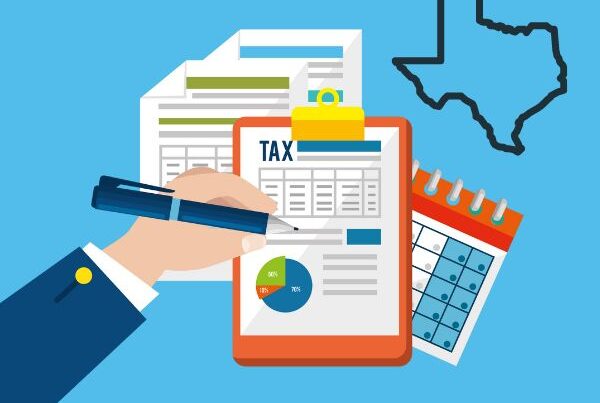Is there anything more thrilling than filling out an online sales tax return? We get it – this stuff is rarely at the top of the “fun list,” but that doesn’t mean it’s not important! In fact, learning how to file sales tax for your eCommerce business has never been more important.
While it can be super daunting if you’ve never done anything like this before, the good news here is that it can be way less scary than you might be expecting. With a little patience and the right know-how, your filings can get done pretty quickly.
On this page, we’ll run through eCommerce sales tax for US and international sellers who have nexus with US states.
eCommerce Sales Tax – Make Sure You’ve Done This First
Online sales tax in the US can be a bit of a headache-inducer. Before you learn how to file your return, it’s best to make sure you’ve already done the following:
- Determined which states you’re “in nexus” with.
- Registered for a permit in the right states.
- Received your permit and relevant forms from the Department of Revenue.
Once you’ve jumped through these hoops, it’s time to actually file your return.
How to File Sales Tax Online
Learning how to file sales tax in most states means establishing when you’ll need to file and how your state prefers you to do so. We explain this below in more detail.
Determine the “When”
The state(s) with which you have nexus will stipulate what’s known as a “sales tax filing frequency.” This is exactly as it sounds – it determines when vendors are expected to file and how often.
This information should be on the letter you received from the relevant Department of Revenue. Alternatively, just log in to your state’s tax website and check for details about filing frequency.
Be sure to check your first filing date. This is an important detail that’s easy to overlook for newbies.
Monthly Filers
Monthly filers will submit returns once a month. In most cases, your filing date will be the 20th business day in the month following your registration. In some states (Maine for example) this might actually be the 15th or even the end of the month.
The majority of US states ask for the 20th, however.
Quarterly Filers
Those filing quarterly will submit the month after the end of each quarter. We outline the basics of this below:
Filing after Q1 – file in April.
Filing after Q2 – file in July.
Filing after Q3 – file in October.
Filing after Q4 – file in January.
General Tip – Start Early
Once you know when you’re expected to file, it’s a good idea to give yourself the best possible head start. Give yourself at least a week to gather all the information you’ll need.
Then Move Onto the “How”
There are typically two options when it comes to how you actually file your sales tax return:
- Paper forms with a check.
- Your state’s online portal.
Some states (Texas is a good example) still love to send you mountains of paperwork to fill out and send back to them. Wherever possible, however, we strongly recommend opting for online tax filing.
You’ll be able to save your progress as you go, save time, and keep track of the information that matters most.
How to File Sales Tax Online – a Basic Template for All States
A comprehensive guide to the idiosyncrasies of every single state’s filing procedure is beyond the scope of this blog post. However, the templates below should go a long way in arming you against your eCommerce woes!
Step 1 – Determine Your Taxable Sales
Your first step should be to figure out how many of your sales are actually taxable in your nexus states.
To do this, you’ll want to wrap your head around any relevant deductions (laid out by each state) and take this off your gross sales figure. Follow this basic formula:
Gross Sales – Deductions = Your Taxable Sales
Once you know your taxable sales, move on to step two.
A Quick Note on Calculating Gross Sales
Depending on the state you’re filing in, you may be eligible for more exemptions than you might expect. This could apply to wholesale sales, products that are exempt, exempt entities, and much more.
Learn more about sales tax exemptions here.
Step 2 – Determine the Amount of Tax You Actually Owe
Now that you know how many of your sales are taxable, it’s time to calculate what you actually owe. To do this, you’ll apply your state’s tax rate to your taxable sales. Follow this basic formula:
Your Taxable Sales x Your State’s Tax Rate = The Amount of Tax You Owe
You risk leaving money on the table if you file after step two. Step three below outlines how you could stand to reduce the amount you finally pay.
Step 3 – Double-Check Your Deductions and Penalties
In most states, there are discounts available to vendors who file on time. Conversely, there are penalties and interests that can accrue if you file late. Be sure to add and subtract these from your due tax before filing. Follow this basic formula:
The Amount of Tax You Owe – Any Discounts + Any Accrued Interest + Any Penalties = Your Total Tax Due
Confused? This Course May Help
Some states just use a local level tax that applies to all sales evenly. Others insist that you break things down by county, city, and more. Unsurprisingly, this can all become pretty confusing if you’re new to sales tax.
Looking for guidance? We’ve crafted a focused course on the subject – Sales Tax Roadmap Made Simple.
It’s designed to teach you everything you need to know, and we go into great detail on everything you need to know for how to file sales tax online. Check it out and start your eCommerce journey the right way!





